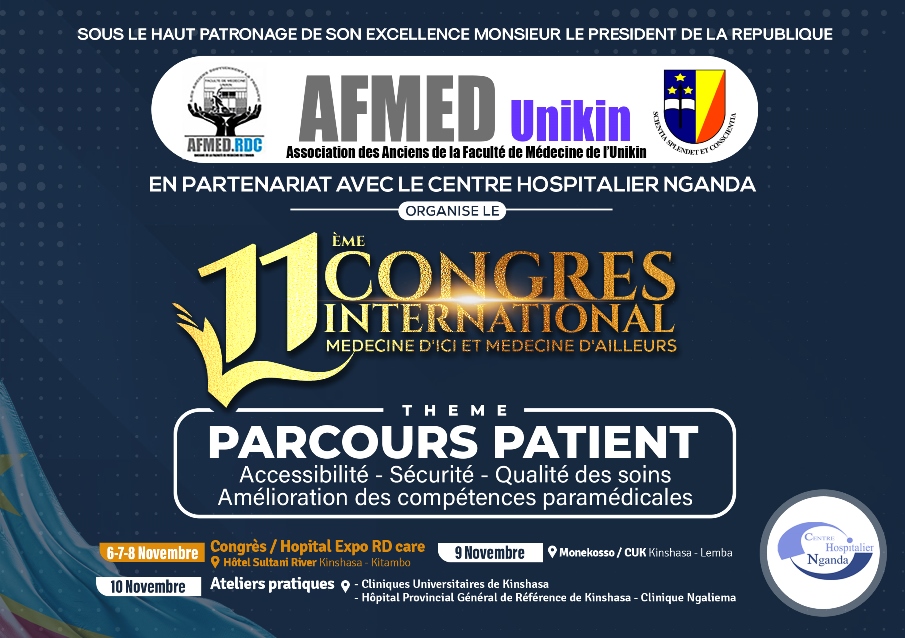Chatté Adawaye1*, Erick Ntambwe Kamangu2, Joseph Fokam3,4, Fabrice Susin5, Ali Mahamat Moussa6,7, Tchombou Hig-Zounet Bertin6,7, Joseph Mad-
Toingué6,7, Dolores Vaira5 and Michel Moutschen5,8
1National Institute of Sciences and Technique of Abéché, Abéché-Chad
2Department of Basic Sciences, Faculty of Medicine, University of Kinshasa, Kinshasa, Democratic Republic of Congo
3Chantal BIYA International Reference Centre for Research on HIV/AIDS Prevention and Management, Yaoundé-Cameroon
4Department of Microbiology, Immunology, Parasitology, Hematology and Infectious Diseases, University of Yaoundé I, Yaoundé-Cameroon
5Reference Laboratory of HIV/AIDS of Liège, CHU de Liège, Liège-Belgique
6Faculty of Human Health Sciences, University of N’Djamena, N’Djamena-Chad
7General National Reference Hospital, Ndjamena-Chad
8Infectious Diseases and Internal Medicine Service, University Hospital Center of Liège, Liège-Belgique
*Corresponding author: Chatté Adawaye, National Institute of Sciences and Technique of Abéché, Abéché-Chad Tel: 0023566289612; E-mail: cadawaye@yahoo.fr
Received date: August 21, 2018; Accepted date: September 27, 2018; Published date: October 2, 2018
Copyright: ©2018 Adawaye C, et al. This is an open-access article distributed under the terms of the Creative Commons Attribution License, which permits unrestricted
use, distribution, and reproduction in any medium, provided the original author and source are credited.
Abstract
Introduction: Antiretroviral therapy is effective only when it maintains the plasma viral load at an undetectable level or below 50 copies of RNA/ml. Viral Load (VL) is a marker of therapeutic follow-up, particularly within the combination protocols of antivirals. Given the genetic diversity of HIV-1, in Resource-Limited Countries (RLCs),
dubious conditions for collecting, conserving and analyzing samples, the choice of one technique over another implies its evaluation on all levels and in particular the cost/benefit ratio.
Objective: The objective of this study was to compare the efficacy of 3 techniques for the measurement of VL for HIV-1 non-B subtypes. The 3 techniques used were: Cobas AmpliPrep/Cobas TaqMan (CAP/CTM) V2.0, Abbott Real-Time and Generic HIV Viral Load®.
Methods: Sample collection was done at the National General Reference Hospital (NGRH) between June and October 2013. A total of 116 samples were collected from People Living with HIV (PLHIV) and under treatment for at least 6 months. Measurements of VL were done at the AIDS Reference Laboratory at the University Hospital of Liège with the 3 techniques mentioned above.
Results: After amplification by the different techniques, 116 samples were compared with Cobas and Abbott and 42 samples were compared with all 3 techniques. This is due to the lack of plasma for some patients for the Generic HIV Viral Load®. A good correlation is obtained between CAP/CTM and Abbott with R2=0.96016 (p<0.05), while between Abbott vs Generic HIV Viral Load® on one hand and CAP/CTM vs Generic HIV Viral Load® on the other,
Pearson correlations (R2) were good and were respectively 0.81064 and 0.72603. This difference with the Generic HIV Viral Load® assay is due to the fact that the plasma has been thawed more than twice. This confirms the fact that plasma freezing, and thawing has more than twice interferes with viral load.
Conclusions: Abbott Real time remains the recommended technique for resource-poor countries, particularly Chad, because of its sensitivity and variability in detecting different subtypes of HIV-1.
Keywords: Plasma viral load; Cobas ampliprep/cobas taqMan;
Abbott real-time; Generic HIV viral load®; Resource-limited countries;
HIV-1
J Infect Dis Ther, an open access journal
ISSN:2332-0877
Adawaye et al., J Infect Dis Ther 2018, 6:5
DOI: 10.4172/2332-0877.1000382









